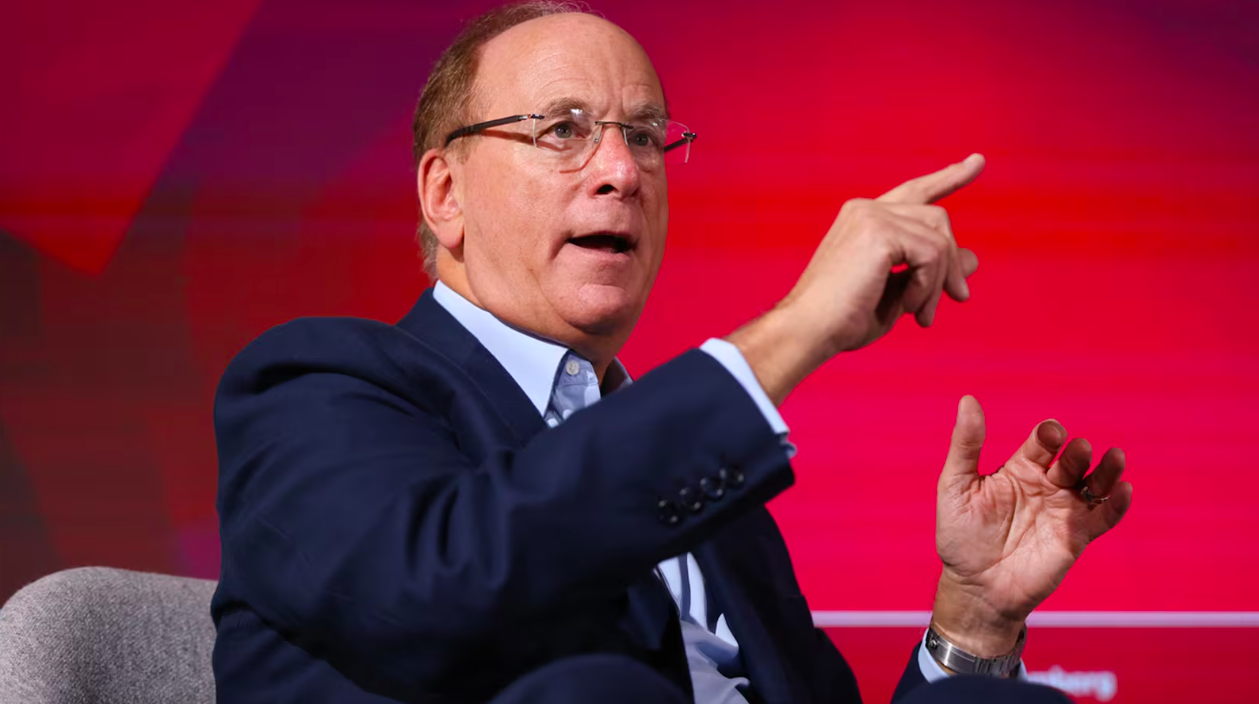In a landmark move that could reshape the future of global finance, Larry Fink, CEO of BlackRock, has announced that the world’s largest asset manager will significantly expand its investments in artificial intelligence and blockchain-driven tokenization. The announcement signals BlackRock’s full embrace of technological disruption, as the firm moves to redefine asset management in the digital era.
A Strategic Pivot Toward Tech-Driven Finance
With over $10 trillion in assets under management, BlackRock’s influence on global markets is unparalleled. Fink’s new strategic direction, emphasizing AI and tokenization, reflects a long-term vision to future-proof financial services and unlock new forms of value creation.
Speaking on the shift, Fink emphasized that artificial intelligence will play a central role in shaping how BlackRock manages risk, optimizes portfolios, and delivers personalized investment strategies at scale. “AI is not just a tool—it’s becoming the foundation of next-generation asset management,” Fink remarked. “It enhances decision-making, identifies patterns in data we could never detect before, and drives better outcomes for clients.”
AI in Asset Management: Smarter, Faster, and More Precise
BlackRock has already begun integrating AI into its flagship investment platform, Aladdin, which handles everything from portfolio construction to risk analytics. By deepening its AI capabilities, the firm aims to evolve beyond conventional forecasting and risk models toward real-time adaptive strategies.
The use of machine learning and natural language processing will allow the firm to analyze global macroeconomic signals, corporate earnings, consumer behavior, and even social sentiment more precisely than ever before. AI also promises to streamline operational efficiency, reduce costs, and improve compliance in a highly regulated environment.
Tokenization: The Future of Asset Ownership
In parallel with its AI investments, BlackRock is doubling down on blockchain technology—specifically, the tokenization of traditional financial assets. Tokenization involves converting physical or digital assets into blockchain-based tokens, which can then be traded, owned fractionally, or programmed with smart contract functionality.
Fink has long advocated for the potential of tokenization to revolutionize capital markets. “Tokenization can drive down costs, improve transparency, and make markets more accessible and efficient,” he noted. BlackRock sees this as particularly transformative for illiquid asset classes like real estate, private equity, and infrastructure, which could be fractionalized and democratized via blockchain networks.
In 2023, the company made its first major foray into the space with the launch of a tokenized money market fund on the Ethereum blockchain. With growing investor demand and technological maturity, BlackRock is now poised to expand its digital asset offerings and build infrastructure that bridges traditional finance and decentralized finance (DeFi).
Implications for the Financial World
Fink’s announcement is more than just a tech update—it’s a clear signal to markets that financial incumbents must evolve or risk becoming obsolete. By leveraging both AI and blockchain, BlackRock is not only enhancing internal capabilities but also shaping industry standards.
This dual-track strategy places BlackRock at the forefront of a broader transformation sweeping through the financial sector. The firm’s scale, resources, and global influence could accelerate the adoption of digital solutions across banks, asset managers, and even sovereign institutions.
A Visionary Bet on the Future
Larry Fink has consistently demonstrated his ability to anticipate and adapt to shifts in the financial landscape—from ESG integration to macroeconomic turbulence. His latest bet on AI and tokenization positions BlackRock to remain an innovation leader in an increasingly tech-driven world.
As the lines blur between finance and technology, Fink is ensuring that BlackRock isn’t just reacting to change—but leading it. In doing so, he’s not only transforming the architecture of asset management but also shaping the future of global capital markets.
